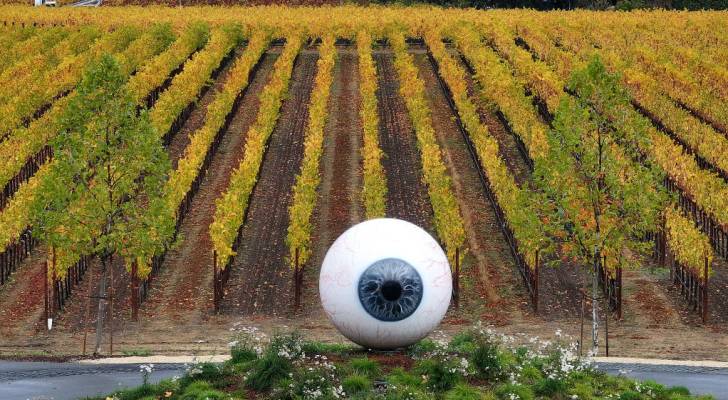
California wineries, which produce about 80% of American wine, are being slammed by tariffs.
Canada has issued retaliatory tariffs of 25% in response to U.S. tariffs on Canadian goods, and a number of the country’s provinces have pulled U.S. liquor off the shelves.
Don’t miss
- I’m 49 years old and have nothing saved for retirement — what should I do? Don’t panic. Here are 5 of the easiest ways you can catch up (and fast)
- Car insurance in America now costs a stunning $2,329/year on average — here’s how 2 minutes can save you more than $600 in 2025
- Gain potential quarterly income through this $1B private real estate fund — even if you’re not a millionaire. Here’s how to get started with as little as $10
Wilson Creek Winery & Vineyards is one of the impacted California wineries. They import the blue glass bottles that their wine is bottled in from China, which is currently subject to a 20% tariff.
Although California’s wine industry hasn’t fully felt the impact of the tariffs yet, it’s already facing major struggles. When asked by ABC News, the owner of the winery shared that they don’t want to have to raise the prices to their consumers, even though their costs are increasing.
Additionally, the U.S. government’s proposed 200% tariff on European wines, Champagnes, and spirits has sent shockwaves through the beverage industry, affecting both importers and domestic producers.
Industry-wide concerns
When the tariffs were first announced in February, Robert P. Koch, the president and CEO of Wine Institute issued a press statement, highlighting the importance of the Canadian market for his industry.
“Canada is the single-most important export market for U.S. wines with retail sales in excess of $1.1 billion annually,” he said. He went on to describe wine as the “most highly value-added agricultural export” in the U.S.
“Any loss of access to the Canadian market will damage the entire U.S. wine sector,” he stated.
Wine and alcohol sales are already down, partly because trends show younger generations like Gen Z are drinking less. With alcohol consumption being questioned, especially moderate drinking, demand has continued to drop.
On top of that, production costs are on the rise. Raw materials, labor and environmental regulations are pushing costs higher, and the tariffs on imports only make things worse.
Wildfires, droughts and other climate change effects are also taking a toll on grape yields and quality.
For wineries like Wilson Creek, these tariffs are affecting everything from production to distribution. Their Italian-made stainless steel bottling equipment and aluminum bottle toppers are all getting hit by the tariffs, putting extra strain on their bottom line.
Read more: Want an extra $1,300,000 when you retire? Dave Ramsey says this 7-step plan ‘works every single time’ to kill debt, get rich in America — and that ‘anyone’ can do it
When it comes to the proposed tariffs on European wines, the higher costs could lead to less spending, impacting jobs in bars, restaurants, and other sectors.
On a bigger scale, these tariffs are adding to global economic uncertainty. Analysts are worried that rising trade tensions could spark a global recession, putting economies around the world at risk.
A golden opportunity?
While there is uncertainty and concern about potential chaos in the industry, some see the looming tariffs as a golden opportunity for U.S. producers.
Natalie Collins, president of the California Association of Winegrape Growers, says it’s time to “reframe” the “narrative” that reciprocal tariffs would hurt the American wine industry.
Collins argues that tariffs could help level the playing field, giving domestic companies a fair chance to compete in their own markets.
Jeff Bitter, president of the Fresno-based Allied Grape Growers, echoed his cautious support in a conversation with reporters at the Unified Wine and Grape Symposium in Sacramento.
“You have to be careful with it, but you can at least explore the option,” Bitter said. “We are up against imports and we’re losing that battle.”
As tariffs continue to shake up the wine industry, California winemakers are getting creative to stay competitive. Some are looking to diversify beyond traditional markets, reportedly eyeing regions like Eastern Europe and Africa as potential growth areas.
Many wineries have also already been investing in new technologies and more efficient production methods in recent years. Some hope by cutting costs and boosting productivity, they’ll be able to maintain profitability without passing on hefty price hikes to consumers.
But in the meantime, businesses like Wilson Creek continue to be hit from all angles by the rising costs.
What to read next
- Accredited investors can now buy into this $22 trillion asset class once reserved for elites – and become the landlord of Walmart, Whole Foods or Kroger without lifting a finger. Here’s how
- Here are 3 ‘must have’ items that Americans (almost) always overpay for — and very quickly regret. How many are hurting you?
- Nearly 1 million Americans have a net worth of at least $10,000,000 — here are 3 ‘quiet’ ways the ultra-wealthy grow their riches (and how you can join the club ASAP)
This article provides information only and should not be construed as advice. It is provided without warranty of any kind.